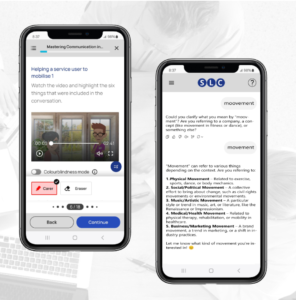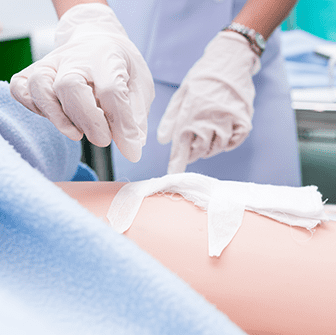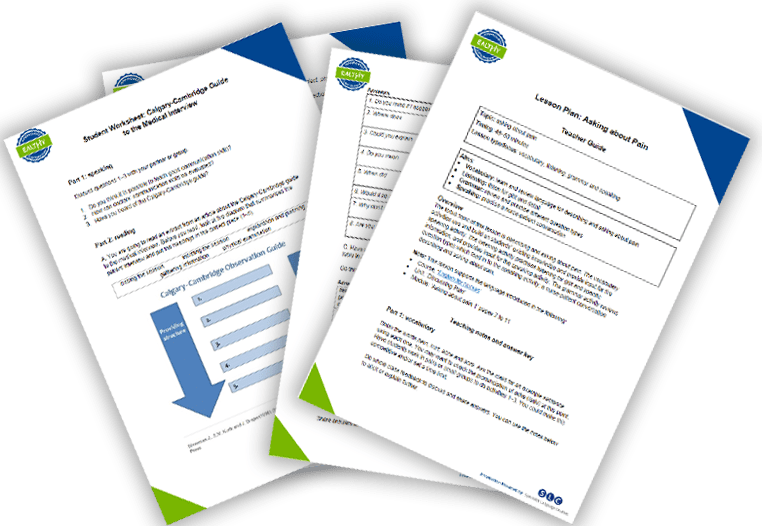
SLC win Ufi grant to develop AI language learning app for social carers
We’re delighted to have won a grant from Ufi VocTech Trust to develop an AI-driven technology solution that provides cheap phone-based language and communication skills

This lesson focuses on the language used around wound care and, specifically, on that used when doing a dressing. It is relevant for nursing and care students and professionals.
B1 (lower-intermediate) level.
Note: this article introduces the first part of the Teachers Notes. There is a link at the bottom to download the complete set of Teachers Notes and the Student Worksheet, so you can use this in your lessons.
● Topic: Wound care
● Timing: 30–50 minutes
● Lesson type/focus: speaking and vocabulary
● Speaking: discuss and practise language for wound care and doing a dressing
● Vocabulary: review and practise language for wound care
The focus of this lesson is wound care and the equipment used to do a dressing. The speaking activity introduces the topic and gives students the opportunity to share their ideas and experience. The vocabulary activity introduces/reviews key vocabulary which students use in the final speaking activity.
Note: This lesson supports the language introduced in the following:
● Course: English for Care: delivering outstanding care
● Unit: Falls and Injuries
● Module: ‘HCA accountability, wounds and dressings’ pages 8 to 11
Put students into pairs or small groups and ask them to discuss questions 1–3 on the student worksheet. Encourage them to share examples from their own experience.
Do whole class feedback to discuss and share answers.
A. Have students work individually to write the terms below the pictures.
Go through the answers as a class. Ask students what each of the items are used for.
1. staples: used to close incisions (cuts) after operations, quicker to use than sutures, close longer wounds
2. Steri-Strips: thin strips of surgical tape which can be used to close small wounds
3. sutures / stitches: can be either removable or dissolvable (e.g., layers of skin)
4. skin glue: also called liquid sutures, often used to close laparoscopy wounds, wounds on the face, does not need to be removed as skin glue eventually washes off
5. plaster / Band-Aid: used for minor cuts and grazes
B. Have students discuss the questions in pairs or small groups.
Do whole class feedback to discuss and share answers.
left: staple remover: device used to lift staples out of the skin after the wound heals
right: stitch cutter: scalpel with curved top which cuts a suture close to the knot before removal
C. Have students work individually to write the terms next to the correct definitions. Then ask students to check their ideas with a partner.
Go through the answers as a class.
1.dressing tray 2.scissors 3.forceps 4.sterile gloves 5.compression bandage
6.bandage 7.surgical tape 8.adhesive dressing 9.gauze squares 10.cotton balls
Download the complete lesson plan and student worksheet:

We have many more available on our partner’s website. EALTHY is a unique international association for
English for Healthcare teachers, writers and researchers. It offers members a growing bank of lesson plans, OET resources, articles and research summaries, as well as free and discounted access to conferences, journals, publications and SLC courses!
Through our partnership, we publish at least three new plans in the EALTHY Members Area every week. So, if you’re a teacher looking for excellent resources, now is the time to join an international English for Healthcare community and take advantage of everything EALTHY has to offer.
Annual memberships are available for teachers and for institutions. We hope very much to see you there!
Get your monthly updates and latest materials on Medical English

We’re delighted to have won a grant from Ufi VocTech Trust to develop an AI-driven technology solution that provides cheap phone-based language and communication skills

We’re delighted to announce a partnership with leading Medical English app, Doxa.
